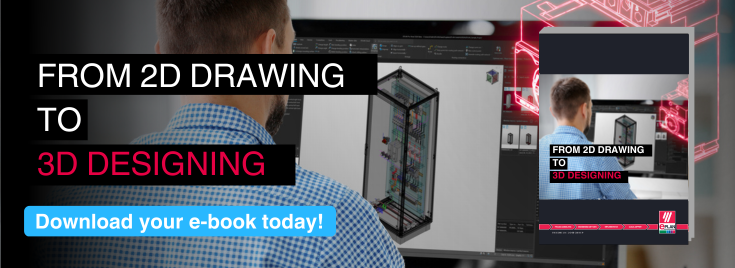Author
 Nigel Grant
Nigel has been working at EPLAN UK for almost 3 years as an Applications Engineer. His main tasks include installing the EPLAN software, giving live demos to prospects and customers and training customers on best practices for using the software. He has previously worked as an Electrical Engineer and a Project Engineer, both of which have driven his passion for helping companies become more efficient and driving their engineering to the next level. Nigel's experience in panel wiring, electrical engineering and project work has given him a well-rounded view of the industry. This enables him to offer customers the best solutions for their processes.
grant.n@eplan.co.uk
Nigel Grant
Nigel has been working at EPLAN UK for almost 3 years as an Applications Engineer. His main tasks include installing the EPLAN software, giving live demos to prospects and customers and training customers on best practices for using the software. He has previously worked as an Electrical Engineer and a Project Engineer, both of which have driven his passion for helping companies become more efficient and driving their engineering to the next level. Nigel's experience in panel wiring, electrical engineering and project work has given him a well-rounded view of the industry. This enables him to offer customers the best solutions for their processes.
grant.n@eplan.co.uk
Why working in 3D can save you more time than you think
Yet some engineers still believe that moving to a three-dimensional design platform will incur longer lead times and offer more opportunities for mistakes. However, the opposite is actually true; and working in flat, two-dimensional drawings has been shown to be less efficient. Crucially, a recent survey showed that most of the best in class manufacturers acquired new hardware when adding 3D modelling, compared to only 53% of laggards[1].
3D engineering and modelling solutions offer greater insight when creating designs. They give users the ability to comprehensively check a design before it’s built, saving both time and money. This approach also ensures that large problems are not found once the construction process has begun.
Increase productivity with fewer mistakes
Working with 3D software not only saves time because fewer mistakes are made, it also reduces the time it takes to build control panels and prototypes. For example, it allows easy communication between automated production equipment, such as drilling and milling machines. This increases productivity, virtually eliminates the risk of error and guarantees consistent top-quality results, which leads to quicker times to market. As a result, the workload decreases and faster deliveries can be made, which leaves time for more projects to be taken on. Studies show that replacing physical with virtual prototypes enables best in class manufacturers to get to market 41 days earlier, with $14,733 lower product development costs[2].
Make improvements and changes in the design stage
In addition, 3D CAE software helps the designer visualise the final products and their constituent parts. The product can be animated to see how the actual components will work together, meaning that the designer can see immediately where improvements could be made, and make the appropriate modifications almost instantly.
By viewing the 3D model in action, design flaws can be picked up quickly, which in turn allows for a faster design process, lowering the design cost and shortening the project completion leads. But virtual prototyping has additional benefits. By fully addressing design issues up front, manufacturers experience fewer change orders downstream and through applying the same classification of product complexity there are marked differentiators here – the best in class manufacturers of the most complex products get to market 58 days earlier and pay $35,904[3] less in product development costs because of fewer change orders.
Clear documentation
Further beneficial features of 3D CAE packages are that they produce excellent documentation that’s easy to understand and use, and that they are well adapted for use in a paperless environment, where data is displayed on, for example, tablets rather than being distributed as paper drawings. This makes version control simple and effective, eliminating the risk of out-of-date drawings being accidentally used during the production, testing or commissioning phases.
In conclusion, working with 3D software saves time because fewer mistakes are made, and it is worth remembering that 3D designs also reduce the time it takes to build the panels. In addition, on-site teams can get a clearer picture of the overall design and they can work in an efficient and effective way, without misunderstandings and confusion.
[1] http://www.javelin-tech.com/main/solutions/pdf/wp_2d_drafting.pdf
[2] http://www.javelin-tech.com/main/solutions/pdf/wp_2d_drafting.pdf
[3] http://www.javelin-tech.com/main/solutions/pdf/wp_2d_drafting.pdf

.png)

Comments